Drugs
If you're struggling with drug addiction, treatment providers can help.
- Cannabinoids
- Marijuana
- Effects Of Using Marijuana
- Marijuana’s Impact On Brain Cells
- Marijuana Detox
- Synthetic Marijuana
- Effects Of Using Synthetic Marijuana
- Cannabinoid Detox
- Hallucinogens
- Bath Salts
- Bath Salts Detox And Withdrawal
- DMT
- Effects Of DMT Use
- GHB
- Effects Of GHB Use
- GHB Addiction Treatment And Rehab
- Ketamine
- Effects Of Ketamine Use
- LSD
- LSD Detox And Withdrawal
- Mescaline
- Mescaline Detox And Withdrawal
- PCP
- Effects Of PCP Use
- Psilocybin Mushrooms
- Effects Of Psilocybin Mushroom Use
- Psilocybin Mushroom Detox And Withdrawal
- Salvia
- Effects Of Using Salvia
- Hallucinogen Detox
- Drug Addiction
- Stimulants
- Adderall
- Effects Of Adderall Use
- Adderall Detox
- Anabolic Steroids
- Effects Of Anabolic Steroid Use
- Cocaine
- Effects Of Cocaine Use
- Cocaine Detox
- Cocaine Addiction Treatment
- Caffeine
- Concerta
- Effects Of Concerta Use
- Concerta Detox
- Ritalin
- The Short And Long Term Effects Of Ritalin Use
- Nicotine
- Crack Cocaine
- Effects And Symptoms Of Crack Cocaine Use
- Crack Cocaine Detox
- Dexedrine
- Effects Of Dexedrine Use
- Dexedrine Detox And Withdrawal
- Stimulant Detox
- Ecstasy
- Effects of Ecstasy (MDMA) Use
- Ecstasy Detox
- Ecstasy Addiction Treatment
- Meth
- Amphetamine Detox
- Shooting Meth: The Most Dangerous Methods Of Use
- Understanding The Effects Of Meth Use
- Meth Detox
- Drug Classifications
- Diet Pills
- Diet Pill Detox
- 10 Most Common Addictions
- The Top 10 Most Dangerous Drugs In The World
- Inhalants
- Effects Of Inhalants Abuse
- Inhalant Detox
- Addiction Statistics
- Antidepressants
- Antidepressant Detox
- Barbiturates
- Amytal
- Effects Of Amytal Use
- Amytal Detox And Withdrawal
- Barbiturate Detox
- Sleeping Pills
- Sonata
- Ambien
- The Effects Of Ambien Use And Addiction
- Ambien Detox
- Lunesta
- Effects of Using Lunesta
- Overdose
- Who Drug Addiction Affects
- Senior Addiction, Risk Factors, And Treatment
- College Drug Abuse
- First Responders, Drug Abuse, And Addiction
- Drug Abuse, Addiction, And Homelessness
- Teenage Drug Addiction
- The LGBTQ Community And Drug Addiction
- Veterans and Drug Addiction
- The 10 Most Addictive Substances On Earth
- Drug Street Names
- Gambling Addiction
- Porn Addiction
- Signs and Symptoms of Porn Addiction
- How Do I Find Help For Porn Addiction?
- Sex Addiction
- Social Media Addiction
- Sugar Addiction
- Video Game Abuse and Addiction: The Basics
- Drug Detox
Drug Addiction And Treatment
There are thousands of different drugs in existence, each of which impacts users differently. A result of abuse of many drugs is addiction, especially if that drug is taken illegally or improperly. Luckily, there are many dedicated drug rehab treatment providers that can help.
What Are Drugs?
A drug is any substance that creates physiological effects when it enters the body. These effects can range from relieving the symptoms of a sore throat to terrifying audio-visual hallucinations. Some drugs are legal, very common, and widely used (for example, Caffeine). Others are only legal when taken with a prescription under the supervision of a physician, such as many Painkillers. Finally, some drugs are illegal under all circumstances. Generally, these drugs are more powerful, more addictive, and more dangerous, but they are still taken by millions of Americans. Both legal and prescription drugs are often taken recreationally and can lead to addiction.
Need Addiction Support?
Help is available. Enter your phone number to receive a call from a treatment provider.
Stimulants
Stimulants, also known as “Uppers,” are a class of drug that provides extra energy and concentration. These drugs typically provide a rush to users and make them more active. There are a wide range of Stimulants, most of which are man-made. Generally, man-made Stimulants are designed to enhance performance or treat mental disorders. However, the surge of dopamine caused by many Stimulants can result in feelings of intense pleasure. The combination of temporary pleasure and perceived performance enhancement make many Stimulants popular choices for abuse.
Unfortunately, some Stimulants are among the most addictive of all substances. These drugs are notoriously difficult to stop using and can lead to years of abuse and dependence. Stimulants also have highly damaging effects on the body after long-term abuse, with heart and lung problems being especially common. Because Stimulant withdrawal can be dangerous, supervised withdrawal may be necessary before rehab.
Adderall
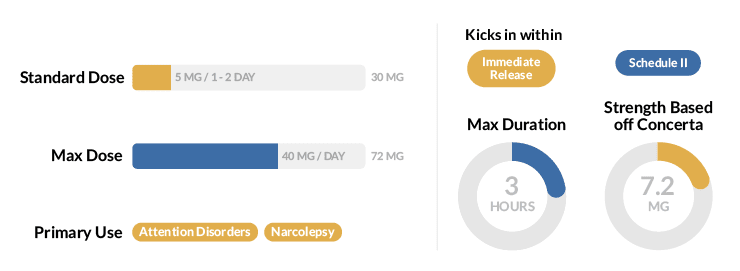
Adderall is a very commonly prescribed medication for Attention-Deficit/Hyperactivity Disorder (ADHD). It is also commonly abused by college students who are seeking to increase mental focus and productivity. However, Adderall is highly addictive and can create major health problems. The chemical similarity between Adderall and Meth leads some Adderall addicts to turn to that drug if they are unable to maintain their supply.
Anabolic Steroids
Anadrol

Oxandrin

Winstrol

Anabolic Steroids consist of a number of compounds that are similar to the hormone testosterone. Anabolic Steroids are usually taken as a workout supplement to increase muscle mass and athletic performance. Repeated Steroid use can lead to addiction and serious medical and mental issues, most famously the hyper-aggression known as “roid rage.” Steroids injected with a needle put users at risk of serious diseases such as HIV/AIDS.
Cocaine
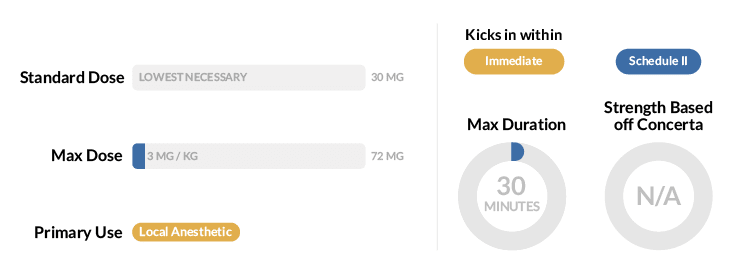
A highly refined form of the coca leaf, a plant native to the Andes Mountains of South America, Cocaine is generally found in a powder form which is snorted, although it is also found in a topical form for medicinal purposes. Cocaine produces an extreme rush in users, but it is also incredibly dangerous to many internal organs such as the heart and nasal passages. Cocaine is considered one of the most addictive substances on the planet, and, due to the high cost of the drug and its highly illegal nature, it is one of the most damaging to the addict’s life.
Concerta
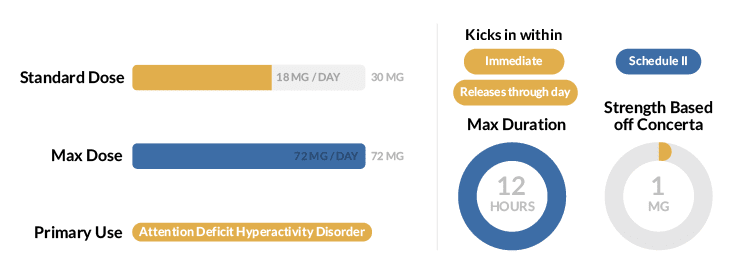
Concerta is a highly addictive prescription Stimulant. The drug is very similar to Cocaine in how it impacts the user and the intense cravings that addicts experience. Concerta withdrawal symptoms are especially severe and often lead to skin problems known as the “Concerta rash.”
Crack Cocaine
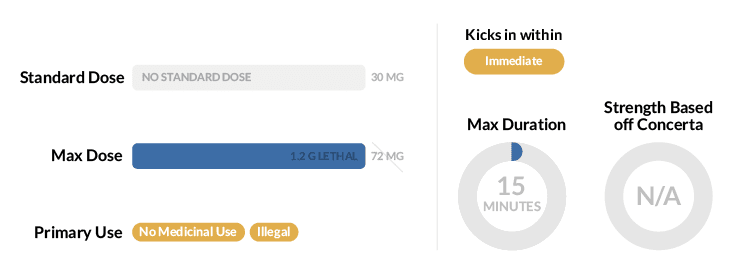
Crack Cocaine, more commonly referred to as Crack, is a heavily modified form of Cocaine. Crack is typically formed into “rocks” and smoked by using a short pipe known as a Crack pipe. Crack impacts the user in a similar manner to Cocaine, but it is even more potent. Crack is actually more addictive than Cocaine, and a full addiction can be started after only a single use. The low cost of Crack, combined with the fact that it is typically mixed with many substances, make the drug incredibly dangerous.
Dexedrine
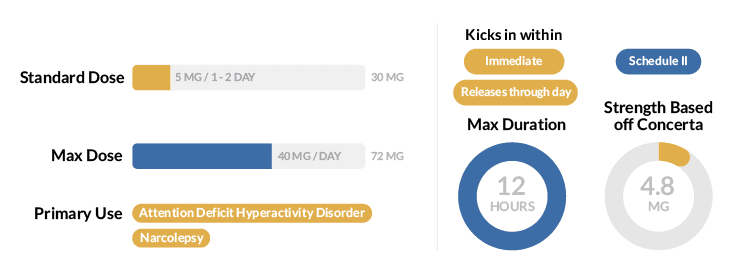
Dexedrine is chemically similar to Meth, and it is similarly addictive. Dexedrine is used to treat ADHD and narcolepsy, although it is not as popular for those purposes as other medications. The drug is a Central Nervous System (CNS) Stimulant, and any treatment course that includes Dexedrine should also include psychosocial support. Cessation of use can result in withdrawal symptoms; prolonged use can result in addiction.
Ecstasy
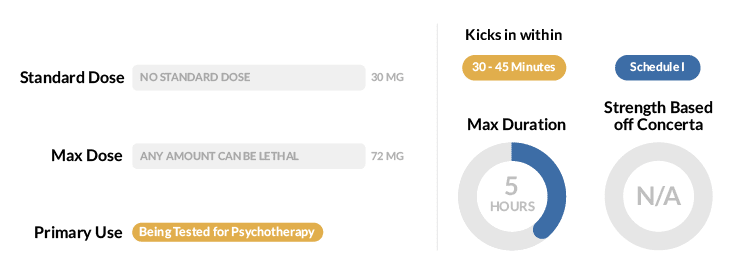
MDMA, better known as Ecstasy or “molly”, produces feelings of intense euphoria and mild hallucinations. Ecstasy is known as a club drug because it is very popular at raves. Ecstasy is dangerous on its own, as it causes major damage to the body, especially the brain and the heart. However, Ecstasy is very often mixed with other substances such as LSD and Heroin, making the drug even more dangerous.
Meth
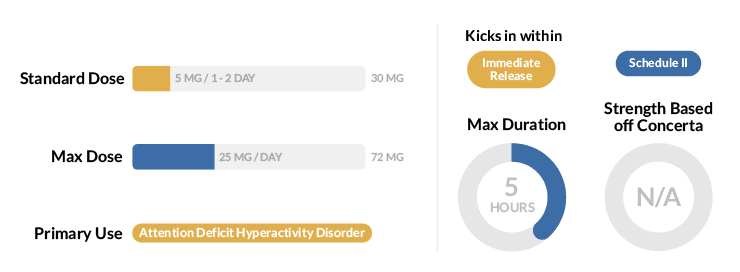
Meth, short for Methamphetamine, is a substance that can be easily made from commonly available items, such as cough medications and batteries. Meth gives users an intense rush, but at an extremely high cost. Meth is one of the most highly addictive chemicals known, and it is also one of the most damaging of any commonly used drug. Meth causes severe damage to many body organs, but it is most well-known for causing tooth decay and accelerated aging. Meth is known as an especially hard addiction to break, a situation that is complicated by its comparatively low cost and widespread availability.
Ritalin
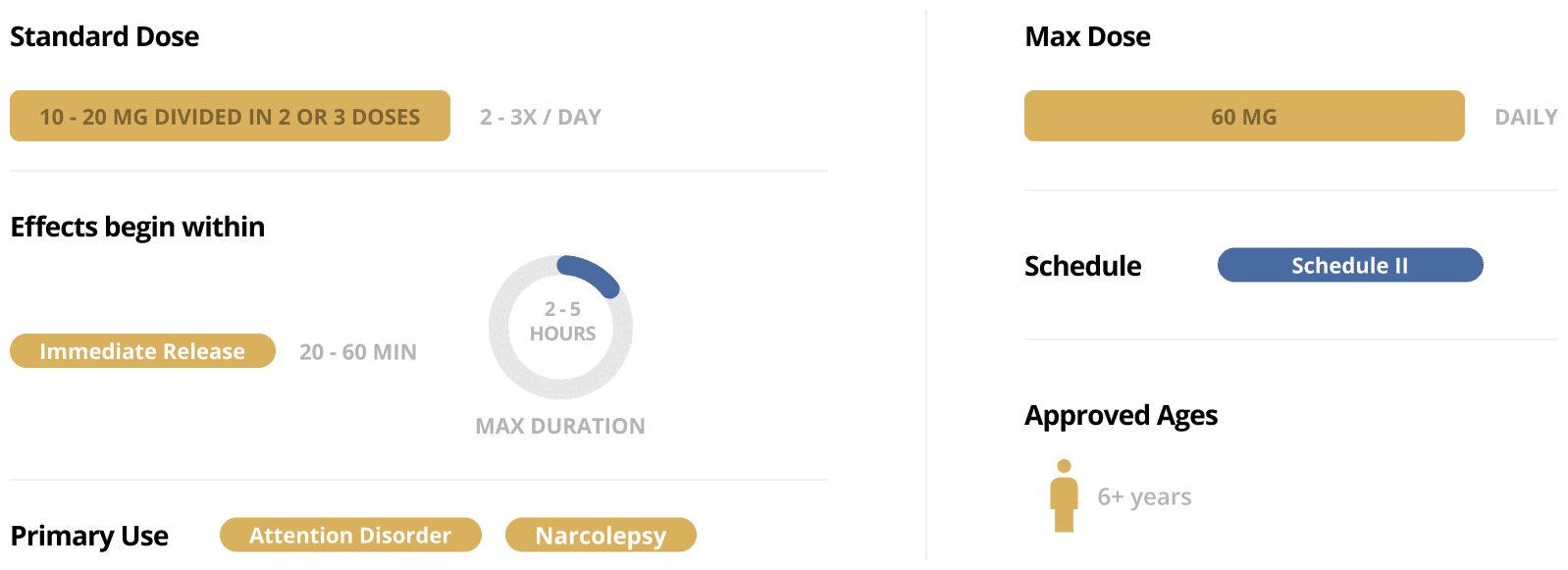
Ritalin is one of the most well-known and commonly prescribed medications for the treatment of ADHD. The drug is best known for causing alertness and concentration, but it also comes with a high potential for abuse. The drug is less commonly abused than Adderall, but it has the same addictive potential. Individuals who are addicted to Ritalin often turn to Meth if they cannot obtain their drug of choice. One of the biggest dangers associated with Ritalin is that the drug interacts with some other drugs and certain mental health issues separate from ADHD, creating potentially dangerous side effects.
Hallucinogens And Dissociatives
Hallucinogens and Dissociatives distort the user’s perception of reality, sometimes to a tremendous extent. These drugs cause audio and visual hallucinations, among many other effects. Some of the oldest drugs used by man include naturally occurring Hallucinogens, although in recent decades man-made Hallucinogens are increasingly common.
Hallucinogens and Dissociatives are generally considered less addictive than many other types of drugs, but they can still lead to dependence. On a short-term basis, Hallucinogens are often more dangerous than other drugs, because they can leave a user completely unaware of their immediate circumstances. Recently, many users have been claiming that Hallucinogens in particular help them self-medicate their mental health issues, but these substances can actually make many underlying problems significantly worse.
Ketamine

Developed as an animal Anesthetic, Ketamine is not legal to prescribe for humans. However, the drug is used recreationally, especially among younger individuals. The drug is incredibly addictive and also produces a number of powerful physical and mental effects. Because Ketamine is odorless and tasteless, it cannot be detected when mixed with a beverage. This has led to Ketamine being used as a date rape drug.
LSD

LSD, or Lysergic Acid or “Acid,” is one of the most Hallucinogenic chemicals known to man. LSD produces intense audio and visual hallucinations, along with intense mood changes. The drug comes in a number of forms, including tablets, capsules, gelatin, and liquid. LSD is not considered especially addictive, but it is a highly dangerous drug, especially for abusers that have underlying mental health disorders.
PCP
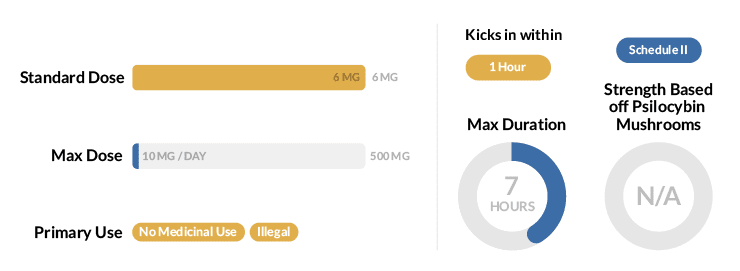
PCP, also known as Phencyclidine or Angel Dust, is very similar in makeup to Ketamine. PCP was originally developed as an Anesthetic, but the drug’s intense side effects quickly led to it being discontinued for that purpose. The hallucinations, delirium, and mania induced by PCP are especially intense, and users are known to become highly unpredictable and dangerous when on the drug. PCP is widely regarded as one of the most dangerous of all drugs by law enforcement and mental health professionals. Unlike most Hallucinogens, PCP is known for being highly addictive.
Psilocybin Mushrooms
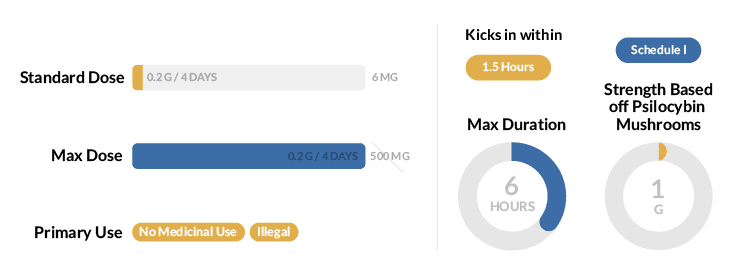
There are over 200 species of mushroom that produce Psilocybin, a powerful Psychedelic compound. Psilocybin Mushrooms, also known as “Magic Mushrooms,” are some of the oldest known intoxicants, and play a role in traditional religious ceremonies across the world. Consuming these mushrooms induces a high and, potentially, hallucinations. Psilocybin Mushrooms are not considered highly addictive, but are dangerous to consume due to the physical and mental impacts they have on the body.
Inhalants
Inhalants include a very large number of substances, linked primarily by how they are taken. Inhalants are sniffed or huffed, causing chemicals to enter the body through the nasal canal. When some chemicals enter the body in this way, they create a short, generally mild high. Commonly abused Inhalants include such common chemicals as nail polish remover, paint thinner, spray paint, gasoline and gasoline by-products, and lighter fluid.
Inhalant use is widespread, but these drugs are among the least well-studied. Inhalants are considered less addictive, and comparatively few users seek treatment for Inhalant use. However, Inhalant use is one of the most dangerous of all drug classifications. These substances can cause severe damage to the body, especially the brain, muscles, and respiratory system.
Cannabinoids
Cannabinoids are some of the most widely used drugs in the world. Cannabinoids produce feelings of euphoria and elation, but they also cause confusion, memory problems, increased heart rate, and decreased reaction time. There is substantial disagreement in the medical community as to the addictiveness of Cannabinoids, but these substances can severely negatively impact the lives of users. Although comparatively few rehab seekers attend treatment specifically for Cannabinoids, a very high percentage of people in rehab use Cannabinoids.
Marijuana, the most popular Cannabinoid, is growing in acceptance as a medicine and recreational drug around the world, with many American states and countries across the globe decriminalizing, or even legalizing, the drug. This has led to significantly higher rates of usage, which in turn has led to more emergency room visits, more addiction issues, and more individuals seeking treatment, especially younger individuals.
Marijuana
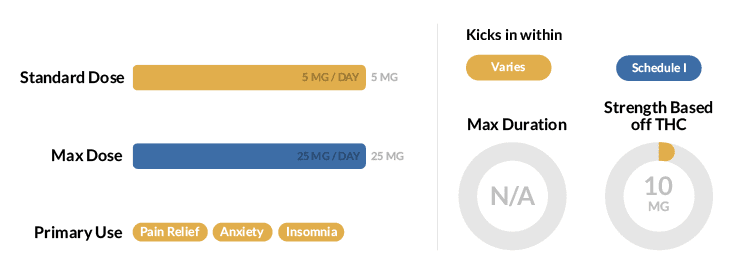
Marijuana, commonly referred to as weed, pot, reefer, and numerous other nicknames, is the most commonly used drug in the United States after alcohol, and one of the most commonly abused substances in the world. Marijuana grows naturally in most climates in the United States, making the drug incredibly hard to keep off the streets. The drug has a vocal advocacy community pushing for its legalization, a campaign that has proven successful in a growing number of states. This has led to a growing belief that Marijuana is harmless, along with a large number of other myths. However, Marijuana addiction is a real issue that causes serious problems in the lives of sufferers, including reduced brain function and lung damage.
Synthetic Marijuana
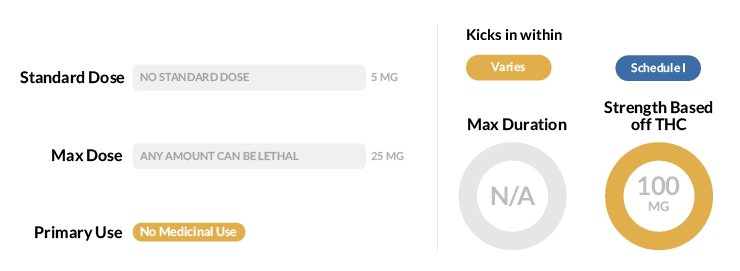
Synthetic Marijuana, also known as Spice or K2, are man-made substances with chemicals that mimic THC (Tetrahydrocannabinol), the primary intoxicant in Marijuana. Synthetic Marijuana is legal in many states, which leads users to believe the substance is not dangerous. However, this drug is quite possibly more addictive than Marijuana, and its effects are just as strong, if not stronger.
Antidepressants
Antidepressants are a number of prescription medications that are designed to elevate and stabilize the moods of individuals who suffer from depression. Antidepressants do not produce an extreme high, and often take up to a month to make an impact on the user. Antidepressants are addictive, but they generally do not induce intense cravings. The danger of Antidepressants is most acute when the patient abuses other substances such as alcohol or Benzodiazepines while taking them.
Diet Pills
There are hundreds of different Diet Pills on the market, some prescription and others over-the-counter. Diet Pills are designed to help users lose weight and keep it off once it is gone. The primary role of Diet Pills is to suppress appetite, but they can also cause increased energy and euphoria. Diet Pills vary tremendously in terms of their addictive potential, but most come with some risk.
Barbiturates
Barbiturates are a class of drug that derive from barbituric acid. Barbiturates slow down the functioning of the CNS, which makes them ideally suited for use as Anesthetics, as well as for the treatment of mental illnesses, sleep disorders, epilepsy, and headaches. At one point, Barbiturates were extremely popular in the medical field; however, they are increasingly disfavored due to how dangerous they are. Barbiturates are not only among the most highly addictive of all drugs, but they also carry some of the highest overdose risk because they shut down many bodily functions.
Amytal

Amytal as a Sedative

Amytal, or Amobarbital, is a highly potent Barbiturate used primarily before surgeries and to treat chronic sleep disorders. Amytal’s effects mimic those of alcohol; the drug is commonly abused for that reason. Those who routinely abuse Amytal are likely to become addicted.
Sleeping Pills
Also known as Hypnotics or Soporific drugs, Sleeping Pills are medications that are primarily prescribed to create drowsiness and induce sleep. Sleeping Pills have been commonly prescribed for decades. Over that time, many specific drugs have been developed and replaced in common usage. One of the biggest issues with many Sleeping Pills is that they are highly addictive. Many users quickly find themselves unable to sleep without them, leading them to take ever-increasing doses. Because they help shut the body down, Sleeping Pills also carry substantial overdose risk and are a common drug of choice for suicide attempts.
Ambien

Ambien is a Sleeping Pill most commonly prescribed for short-term insomnia. Dependence issues often begin when users increase their dosage to fall asleep faster. Ambien is one of the most addictive commonly prescribed drugs, with addiction beginning in as little as two weeks.
Lunesta

Lunesta is a very powerful Sleeping Pill. There is a widespread myth that Lunesta is non-habit forming, but nothing could be further from the truth. Lunesta can cause an ever-worsening addiction that often leads sufferers to mix the drug with others to increase its effects.
Sonata

Sonata is a Sleeping Pill best known for being faster-acting and less powerful than most others. The medication only remains in the body for approximately an hour, which leads many users to take too much. Increasing doses beyond a safe level in this manner can lead to accidental addiction.
What Do I Do If I Or A Loved One Needs Rehab?
Addiction is a terrible condition, and it doesn’t only impact the addict themselves. Everyone who knows or cares about someone with an addiction suffers as well. Addiction destroys lives and families. No one sets out to become addicted, but more than 23.5 million Americans struggle with Substance Use Disorders (SUDs) every day.
Some drugs are notoriously difficult to stop using, and the effects of withdrawal from detox can be quite terrible. However, help is out there. Every day, thousands of Americans exit drug and alcohol rehab treatment centers and enter a newfound life of sobriety. Contact a dedicated treatment provider today.
Start Your Recovery Today
Help is available. Explore your recovery options and break free from addiction.
